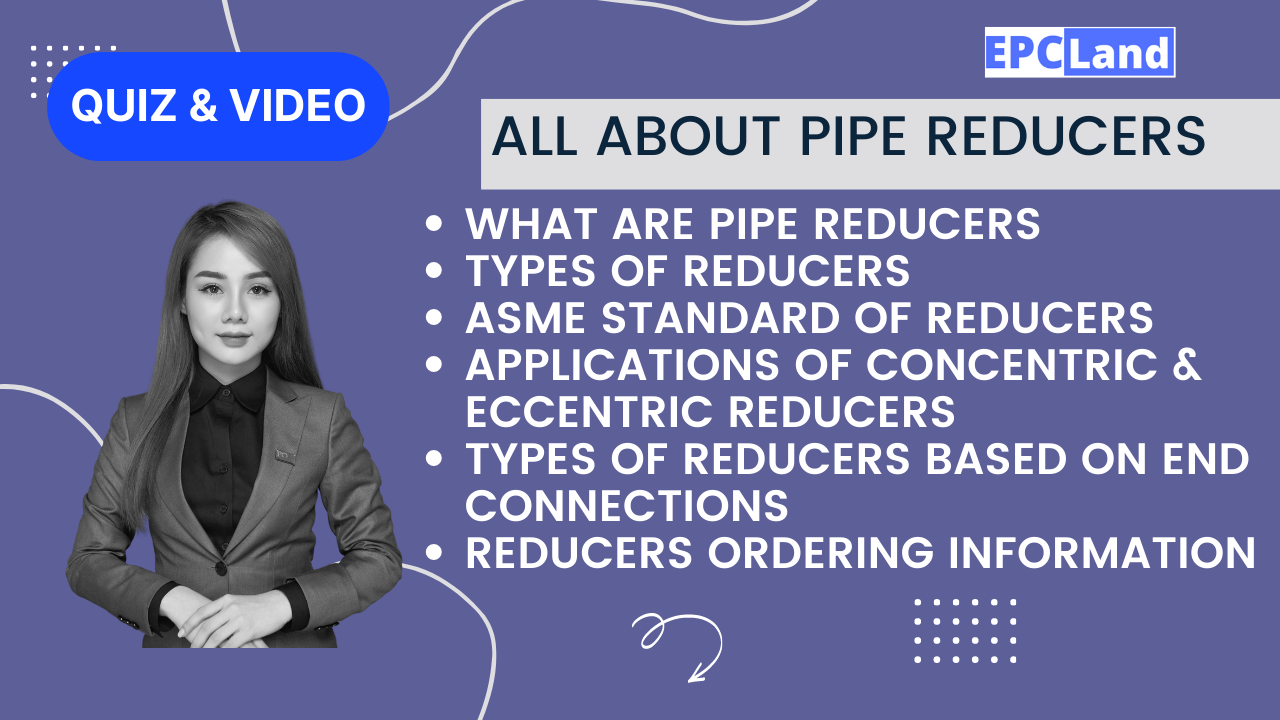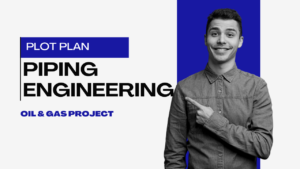Pipe reducers are essential components used in piping systems to connect pipes of different diameters, allowing for smooth transitions and changes in flow direction. In this comprehensive guide, we’ll delve into the world of pipe reducers, exploring their types, ASME standards, applications, and even provide valuable ordering information.
Table of Contents
Types of Reducers
Pipe reducers come in two primary types: concentric and eccentric. Each type serves specific purposes based on the needs of the piping system.
Concentric Reducers
Concentric reducers are characterized by their symmetrical design, where the center axis of the larger end and the smaller end coincide. These reducers provide a gradual transition between pipes, ensuring minimal turbulence in the flow. They are commonly used when there is a need to maintain a consistent fluid velocity or pressure.
Eccentric Reducers
Eccentric reducers, on the other hand, have an offset center axis between the larger and smaller ends. This design is beneficial for applications where the reduction in pipe diameter is accompanied by the need to eliminate potential accumulation of air or gases at the larger end. Eccentric reducers are especially useful in situations where the fluid needs to drain from the larger pipe.
ASME Standards of Reducers
The American Society of Mechanical Engineers (ASME) has established standards to ensure the quality, safety, and compatibility of various engineering components, including pipe reducers.
ASME B16.9 is the standard that covers factory-made wrought steel buttwelding fittings, including reducers. This standard specifies the dimensions, tolerances, materials, and testing requirements for pipe reducers. Adhering to ASME standards when selecting and installing reducers is crucial to maintaining the integrity and safety of the piping system.
Applications of Concentric & Eccentric Reducers
Concentric Reducers Applications
Concentric reducers find applications in scenarios where a smooth transition between pipes of different sizes is required without causing significant pressure or flow disruptions. Industries such as water treatment, chemical processing, and HVAC systems often use concentric reducers to ensure efficient fluid conveyance.
Eccentric Reducers Applications
Eccentric reducers are commonly employed in applications where the elimination of air or gases trapped in the piping system is vital. These include drainage systems, sewage treatment plants, and installations where proper venting is necessary to prevent pressure buildup.
Types of Reducers Based on End Connections
Reducers also vary based on the type of end connections they possess. Some common types include:
- Welded Reducers: These reducers are welded directly to the pipes, ensuring a strong and leak-resistant connection.
- Threaded Reducers: Threaded reducers have threaded ends that allow for easy installation without welding. They are commonly used in small-diameter piping systems.
- Flanged Reducers: Flanged reducers come with flanges that can be bolted to corresponding flanges on pipes or other equipment. This connection method allows for easy maintenance and disassembly.
Reducers Ordering Information
When ordering pipe reducers, several crucial pieces of information need to be specified to ensure the correct product is delivered:
- Reducer Type: Clearly indicate whether you need a concentric or eccentric reducer.
- Size: Specify the sizes of both the larger and smaller ends of the reducer.
- Material: Choose a suitable material that is compatible with the fluids and environment the reducer will be exposed to.
- End Connections: Indicate the type of end connections required, such as welded, threaded, or flanged.
- ASME Standard: If applicable, specify the ASME standard (e.g., ASME B16.9) that the reducer should adhere to.
- Quantity: Provide the quantity of reducers needed for your project.
FAQs about Pipe Reducers
Q1: What is the purpose of a pipe reducer? A1: Pipe reducers are used to connect pipes of different diameters, allowing for smooth transitions and changes in flow direction.
Q2: What are the types of pipe reducers? A2: The two main types are concentric reducers and eccentric reducers.
Q3: Where are concentric reducers commonly used? A3: Concentric reducers find applications in scenarios requiring smooth transitions without significant pressure disruptions.
Q4: What is the significance of ASME standards for reducers? A4: ASME standards ensure the quality, safety, and compatibility of pipe reducers in various engineering applications.
Q5: How do I specify the correct reducer when ordering? A5: Specify the reducer type, sizes, material, end connections, ASME standard (if applicable), and quantity.
In conclusion, pipe reducers are fundamental components in piping systems that enable seamless transitions between pipes of different sizes. Whether it’s for maintaining flow efficiency, eliminating trapped air, or ensuring proper drainage, selecting the right type of reducer and adhering to ASME standards is crucial. By understanding the various types, applications, and ordering information, engineers and professionals can make informed decisions that contribute to the reliability and efficiency of their piping systems.
Recommended courses (Published on EPCLand)
- Basics of Piping Engineering
- Piping Layout Engineering
- Piping Material Engineering
- Piping Stress Analysis
- Complete Course on Piping Engineering
- Material Requisitions
- Piping Material Specifications
- Valve Material Specifications
Don’t miss the published articles on following:
Related Video
Attempt Quiz
Question 1:
What are pipe reducers?
Explanation: Pipe reducers are devices used to reduce the size of a pipe from a larger diameter to a smaller diameter, allowing for a smooth transition in pipeline systems.
Question 2:
What are the two main types of reducers?
Explanation: The two main types of reducers are Concentric Reducers and Eccentric Reducers. Concentric reducers maintain a central alignment between the two pipes, while eccentric reducers have an offset alignment.
Question 3:
Which ASME standard covers the dimensions and tolerances of pipe reducers?
Explanation: The dimensions and tolerances of pipe reducers are covered by ASME B16.9, which is the standard for factory-made wrought steel buttwelding fittings.
Question 4:
What are the typical applications of Concentric and Eccentric Reducers?
Explanation: Concentric reducers are often used in applications where a smooth transition is required, such as cooling water circuits, while eccentric reducers are suitable for drainage systems to prevent potential air or vapor pockets.
Question 5:
What types of end connections can reducers have?
Explanation: Reducers can have various end connections, including Flanged, Threaded, Socket Weld, Butt Weld, and other types depending on the specific requirements of the pipeline system.
Question 6:
What information is typically included in reducers ordering information?
Explanation: Reducers ordering information typically includes details such as the type of reducer (concentric/eccentric), pipe diameters, wall thickness, end connection type, material specifications, and other relevant dimensions.



